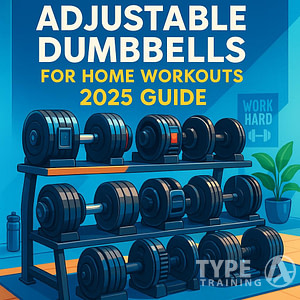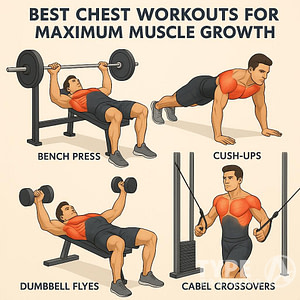Encouraging wellness and fitness in a senior living home is paramount for the health and happiness of its residents. As we age, staying active and engaged not only contributes to physical well-being but also to mental and emotional health.
Promoting Wellness in Senior Living is essential for enhancing the quality of life for residents.
Implementing wellness and fitness programs can seem challenging, but with thoughtful planning and by recognizing the unique needs of seniors, these initiatives can be both effective and enjoyable. Tailoring programs to fit different abilities and interests ensures that everyone has an opportunity to participate and benefit from a holistic approach to health.
Programs focused on Promoting Wellness in Senior Living can also incorporate innovative approaches that keep seniors engaged.
Popular posts:
Creating a supportive environment is key to fostering a culture of health and wellness within a senior living community. This involves more than just physical activities; it should encompass nutritional education, opportunities for social connections, and resources for mental health and emotional well-being.
Promoting Wellness in Senior Living requires a multifaceted strategy that encompasses all aspects of health.
Establishing a well-rounded wellness program addresses the multifaceted nature of health and can help residents thrive in their golden years. Accessibility and mobility considerations are also crucial to ensure that all residents, regardless of their physical capabilities, have the opportunity to engage in wellness and fitness activities safely.
By investing in programs that prioritize Promoting Wellness in Senior Living, communities can create healthier environments.
Key Takeaways
- Tailor wellness programs to fit varying senior needs and abilities.
- Foster a holistic approach to health, including mental and social aspects.
- Ensure programs are safe and accessible to all levels of mobility.
Understanding Wellness in Senior Living
Understanding the core elements of Promoting Wellness in Senior Living helps in crafting effective strategies.
When it comes to enhancing your quality of life as you age, wellness and fitness are not just trends; they are essential aspects of daily living that can significantly affect your health and happiness.
Emphasizing Promoting Wellness in Senior Living can lead to profound changes in overall health and vitality.
Defining Wellness and Fitness for Seniors
Wellness for seniors goes beyond mere physical health; it’s a holistic concept that includes various dimensions of well-being. A wellness program tailored for older adults typically encompasses activities that foster physical, emotional, and social health.
Similarly, fitness for seniors refers to maintaining and improving muscle strength, flexibility, and cardiovascular health through exercises that are safe and considerate of the body’s changes with age.
The Importance of Physical Health as We Age
As you age, maintaining your physical health becomes crucial. Regular physical activity helps in managing and preventing chronic diseases, improves mobility, and reduces the risk of falls.
Engaging in a wellness program that includes exercises like walking, swimming, or yoga can help you sustain your independence and enhance your overall well-being.
Emotional and Spiritual Aspects of Wellness
Wellness isn’t just about the body; it’s also about the mind and spirit. Emotional and spiritual wellness is about understanding and respecting your feelings, fostering relationships, and seeking purpose.
Activities like group discussions, meditation, and art therapy can play significant roles in maintaining your emotional balance and spiritual health. These elements are integral to a well-rounded wellness program that supports you in achieving a high quality of life in your senior years.
Promoting Wellness in Senior Living also includes fostering an environment that nurtures mental and emotional health.
Designing Effective Fitness Programs
When designing fitness programs, consider the importance of Promoting Wellness in Senior Living.
When designing fitness programs for seniors, it’s essential to focus on exercises that are both safe and beneficial. It’s not just about staying active; it’s about selecting the right types of exercise to enhance strength, flexibility, and cardiovascular health.
Tailoring Exercises to Senior Needs
Your fitness programs should start with exercises that meet the specific needs of seniors. Activities such as tai chi and yoga can improve balance and flexibility, reducing the risk of falls.
It is important that the movements are low-impact and can be easily adapted for those with limited mobility or health issues. Ensuring that the exercise program is enjoyable and accessible will encourage consistent participation.
Incorporating Strength and Flexibility Training
Strength training is not just for the young; it’s crucial for maintaining muscle mass, bone density, and joint health in seniors.
Incorporate light weights or resistance bands to build muscle strength gradually. Combine this with flexibility exercises, which are pivotal for maintaining a good range of motion and preventing stiffness.
Incorporating strategies for Promoting Wellness in Senior Living ensures comprehensive health benefits.
Balancing Cardio Routines with Muscle Work
A blend of aerobic (cardio) activities and muscle strengthening is key for a well-rounded fitness program.
While walking and swimming are excellent for improving heart and lung function, combining them with strength exercises ensures that your muscles are also being taken care of.
Aim for at least 150 minutes of moderate-intensity physical activity per week, as advised by health professionals, ensuring that cardio routines are evenly distributed with muscle work for maximum benefits.
Creating a Supportive Environment
Creating a supportive environment is integral to Promoting Wellness in Senior Living.
To foster wellness and fitness within your senior living home, it’s crucial that you create a supportive environment tailored to the needs and abilities of your residents. This involves not only physical adjustments to the facilities but also incorporating technology and community engagement to ensure a holistic and engaging experience.
Adapting Facilities for Senior Wellness
Facilities are the cornerstone of promoting senior wellness. Your fitness center should provide easy access and safe equipment specifically designed for seniors. To accommodate your residents, consider:
- Handrails and non-slip surfaces to prevent falls
- Wide doorways and accessible bathrooms to ease mobility
- Equipment that is low-impact, such as recumbent bikes or resistance bands
Implementing hydrotherapy equipment supports seniors in exercises while reducing the risk of injury, thus improving their balance and mobility in a safer environment.
Leveraging Technology for Enhanced Fitness
Use technology to provide personalized fitness experiences and track progress. Your senior living community can integrate:
- Fitness trackers to encourage residents to meet their daily activity goals
- Virtual reality systems for engaging low-impact exercises
- Online platforms to offer various exercise programs
The goal is to employ technology that motivates and sustains regular physical activity among your residents, making fitness both enjoyable and measurable.
Family and Community Involvement
Family involvement strengthens senior wellness by fostering emotional support and motivation. Encourage families to:
- Participate in organized fitness days
- Join in on social activities that include physical components
Moreover, integrate your programs with the broader community to provide a varied and stimulating environment. This could mean collaboration with local fitness centers or organizing events that highlight the importance of activity and wellness, aligning with the comprehensive approach to wellness encouraged in senior living communities. The inclusion of intergenerational activities can also be particularly enriching and beneficial.
Nutrition and Hydration Essentials
Proper nutrition and hydration play a pivotal role in maintaining your quality of life and supporting metabolism. Ensuring that you get the right balance can enhance your overall well-being.
Proper nutrition plays a pivotal role in Promoting Wellness in Senior Living.
Planning Balanced Diets for Seniors
A balanced diet provides the nutrients your body needs to function correctly. To meet your nutritional needs, your meals should include a variety of foods. Here is a simple guideline to follow:
- Fruits and Vegetables: Aim for at least five portions every day for vitamins, minerals, and fiber.
- Lean Protein: Include sources like poultry, fish, beans, and nuts to support muscle health.
- Whole Grains: Choose bread, cereals, and pasta made from whole grains for sustained energy.
- Dairy or Alternatives: Consume milk, cheese, or fortified plant-based alternatives for calcium and vitamin D.
Remember, your dietary needs can change as you age. Adjust your diet to include soft, well-cooked, or pureed foods if you have difficulty with digestion or dental issues.
Understanding the Role of Water and Hydration
Your body relies on water for every function it performs.
Staying properly hydrated helps maintain your metabolism and regulate body temperature.
Follow these tips to maintain hydration:
-
- Consistent Intake: Drink small amounts of fluids consistently throughout the day.
- Water-Rich Foods: Incorporate water-rich foods like cucumbers, tomatoes, and watermelon into your meals.
Hydration is key when Promoting Wellness in Senior Living.
- Limiting Diuretics: Beverages like coffee and alcohol are diuretics and can lead to dehydration, so limit their intake.
For seniors, a conscious effort to maintain hydration is necessary, and making it a habit can be beneficial. To make drinking water more enjoyable, find a water type that you prefer, such as adding a slice of lemon for flavor.
Fostering Social and Intellectual Connections
To enhance wellness in your senior living home, it’s crucial to focus on cultivating both social and intellectual connections. These elements are pivotal for maintaining a vibrant, engaged community.
Fostering social connections is an important aspect of Promoting Wellness in Senior Living.
Coordinating Social Events and Activities
Monthly Themed Gatherings: Create a lively environment by organizing monthly parties with themes like ’50s Rock ‘n’ Roll or a Hawaiian Luau. Such themes can reignite happy memories and encourage socialization.
Interactive Game Nights: Hold regular game nights featuring board games, trivia contests, or card tournaments.
Bingo, for instance, is not only fun but can improve concentration and provide an intellectual challenge.
Communal Hobby Clubs: Establish hobby clubs, such as gardening or knitting, to foster common interests and encourage residents to teach and learn from each other – nurturing both social and intellectual growth.
Scheduled Group Exercises: Incorporate group exercise sessions like yoga, dancing, or tai chi to promote social wellness while enhancing physical health.
Encouraging Lifelong Learning and Education
Educational Workshops and Lectures: Schedule workshops on various topics, from history to digital literacy, inviting experts to share their knowledge.
This caters to the intellectual stimulation and educational interests of residents.
Engaging activities are critical for Promoting Wellness in Senior Living.
Book Clubs: Form a
Language Classes: Offer language classes to not only learn a new skill but also to prepare for any potential travel, fulfilling both educational desires and cognitive exercise.
Health Management and Prevention Strategies
Effective health management and prevention strategies are essential in senior living homes to ensure that residents remain as healthy and active as possible.
Effective health management is crucial in Promoting Wellness in Senior Living.
Prioritizing the monitoring of chronic conditions and investing in fall prevention can significantly improve the quality of life for your senior residents.
Monitoring Chronic Conditions in Seniors
Chronic diseases such as heart disease, diabetes, cancer, arthritis, and osteoporosis are prevalent among the elderly and can greatly impact their wellbeing.
To manage these conditions, regular health assessments are imperative. You should:
- Encourage routine check-ups to keep track of health concerns and modify treatments as needed.
- Educate about managing high
blood pressure and type 2 diabetes with diet, exercise, and medication adherence. - Establish clear guidelines to monitor symptoms and teach your staff how to recognize early signs of disease exacerbation.
Fall Prevention and Safety Around the Home
Falls are a significant risk for seniors, potentially leading to injuries that can affect mobility and independence. To prevent falls:
- Audits of living spaces should be conducted to ensure they are free of hazards. Remove loose rugs, secure electrical cords, and install grab bars in critical areas.
- Exercise programs should be designed to focus on strength and balance, critical to preventing falls.
- Encourage the use of personal emergency response systems to alert staff in case of a fall.
Emotional Well-Being and Mental Health
In your senior living home, addressing emotional well-being and mental health is crucial. Tailored activities and support systems can significantly alleviate feelings of depression and anxiety, while engaging in cognitive activities can help slow down memory decline.
Addressing emotional health is a key component of Promoting Wellness in Senior Living.
Dealing with Depression and Anxiety
Experiencing depression and anxiety in senior living homes is not uncommon, but recognizing and addressing these concerns proactively is key.
Strategies such as:
- Routine Exercise: Engage in daily physical activities that are enjoyable and suitable for various fitness levels.
- Social Interaction: Encourage participation in events that facilitate meaningful connections with other residents.
- Professional Support: Provide access to mental health professionals who specialize in geriatric care.
may contribute to reducing symptoms of depression and anxiety.
In particular, physical activity has been linked to improved moods and decreased rates of depression. Recognizing the signs early and providing a supportive environment can help manage these conditions effectively.
Memory Care and Cognitive Activity
Memory care is a vital component of mental health services in senior living homes, especially for residents with Alzheimer’s or dementia.
Enhancing cognitive function through activities such as:
- Puzzles and Brain Games: These stimulate cognitive function and can help slow cognitive decline.
- Reminiscence Therapy: Sharing past memories and stories as a way to engage cognitive pathways and promote emotional well-being.
can support your residents’ cognitive health.
It’s important to create a structured environment that is both stimulating and comforting, as this can help maintain cognitive skills and reduce the effects of memory loss.
Addressing Accessibility and Mobility Challenges
Addressing mobility and accessibility challenges is essential for ensuring seniors in your living home maintain their independence and continue to partake in fitness activities.
Providing tailored exercise options and facilitating transportation access are keys to fostering a wellness environment.
Exercise Options for Limited Range of Motion
Joints and their range of motion can be a limiting factor when it comes to physical activity for seniors.
It’s important to offer exercise options that accommodate these limitations while still promoting independence and movement. Consider implementing low-impact routines that focus on maintaining and improving mobility and flexibility, such as:
- Chair yoga or wheelchair exercise sessions, which can enhance joint flexibility while being gentle on the body.
- Swimming or water aerobics that reduce stress on joints thanks to water buoyancy.
- Resistance band exercises that allow for strength building without the need for heavy weights.
All exercises should be designed to encourage movement within each individual’s comfortable range of motion, ensuring they can participate safely regardless of their abilities.
Transportation and Community Access
Providing reliable transportation services is crucial for supporting the well-being of seniors, especially for those living in assisted living facilities.
Easy access to community events, medical appointments, and social outings can greatly improve the quality of life and sense of autonomy. Ensure your transportation options include:
Accessibility is vital when Promoting Wellness in Senior Living.
- Specially adapted vehicles that are wheelchair accessible and equipped with lifts.
- Scheduled transportation services to common destinations such as shopping centers, parks, and other local amenities.
- Trained staff to assist residents both in and out of vehicles for a secure and worry-free journey.
Frequently Asked Questions About Promoting Wellness in Senior Living
This section emphasizes the importance of Promoting Wellness in Senior Living.
In this section, you’ll find targeted questions and answers designed to help foster Promoting Wellness in Senior Living, ensuring a holistic approach to the well-being of residents.
What are effective methods to enhance physical fitness for residents of senior living homes while Promoting Wellness in Senior Living?
To enhance physical fitness, water aerobics offers an enjoyable and low-impact option that improves flexibility and reduces joint pain.
Additionally, incorporating daily walks or chair yoga can cater to varying mobility levels.
How can we design a wellness program that caters to senior citizens’ specific needs in Promoting Wellness in Senior Living?
Your wellness program should include exercise programs customized for seniors, addressing common health issues like high
What activities promote social wellness among senior living community members?
Communities can encourage social wellness by organizing group activities such as game nights, communal gardening, and group exercise classes. These activities help build connections and foster a sense of community among residents.
How can senior living homes integrate dimensions of wellness into daily activities?
By offering varied activities that touch on different wellness aspects, such as intellectual, spiritual, and occupational activities, homes can support a comprehensive wellness approach. This could involve arranging
In what ways can a health and wellness program benefit elderly individuals in the context of Promoting Wellness in Senior Living?
A health and wellness program benefits seniors by promoting physical health, offering nourishment through healthy meals, and supporting emotional well-being. These programs are central to maintaining independence and enhancing quality of life.
What strategies can be employed to maintain and improve mental wellness for seniors?
To maintain mental wellness, senior living homes can provide activities that stimulate cognitive function. Examples include puzzles and memory games.
Incorporating various activities focused on Promoting Wellness in Senior Living can enhance residents’ quality of life.
To maintain mental wellness, focus on Promoting Wellness in Senior Living through engaging programs.
Integrating mindfulness practices and providing access to indoor fitness ideas can also support mental health. They also help in fostering a supportive community environment.
The commitment to Promoting Wellness in Senior Living benefits all aspects of senior health.
Ultimately, Promoting Wellness in Senior Living is about creating a vibrant and supportive community.














